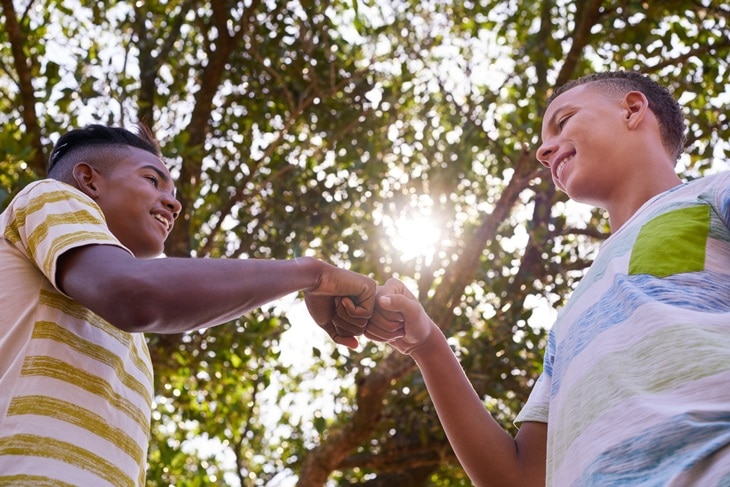Kindness Matters
While being kind might sound easy, it is complex. If kindness was simple, then everyone would be kind and no one would experience meanness and bullying. Imagine a world where kindness is the norm. Is it possible to create homes, schools, and communities where kindness is the norm? The answer is, yes – but to make this imagined world a reality, we need to teach, model, and reward kindness.
Being kind means that you think about the needs and concerns of others. Kind people volunteer, help others, and think about bigger issues that affect their communities. Compassionate thinking and generous actions demonstrate kindness.
Unfortunately, many schools respond to negative behaviors such as bullying with punishment, which is thought to reduce or eliminate such behaviors. After years of research on “zero-tolerance” to end bullying and violence, we know that these punishment-based approaches do not work. Given this knowledge, it makes better sense to focus on teaching and modeling pro-social behavior, like teaching kindness.
Key Elements in Teaching Kindness
Although kindness programs can vary, most share these approaches:
- Include gratitude activities;
- Include volunteer activities or service learning;
- Include students to develop activities to help others;
- Facilitate respectful conversations;
- Generate open-ended discussion questions;
- Encourage working together; and
- Teach and model naming and expressing emotions.

Ways to Teach Kindness
- Mindfulness involves becoming aware of a specific thought, emotion, or behavior. This means being mentally flexibility, and through training, even young children can learn mindfulness. Mindfulness skills are taught in schools, and researchers are beginning to study the effects of mindful kindness. All children can participate in setting daily goals and age-appropriate practices to be more mindful and caring.
- Social-Emotional Learning (SEL) teaches kindness by focusing on cooperation, responsibility, self-control, empathy, and provides specific actions to build these skills. Classrooms that use SEL include daily morning meetings to check in with students. Teachers ask open-ended questions, encourage working together, and use healthy conflict resolution. Schools using SEL show improved academic performance and prosocial behavior, and decreases in discipline referrals.
- Acts of Kindness are actions to do something nice for someone else. Doing acts of kindness is free and has positive ripple effects to those who experience and witness kindness. There are online lessons and social media messages that inspire, empower, act, and share acts of kindness – which helps to make everyone more aware of how positive this can be.
The Impact of Teaching Kindness
When elementary students performed three acts of kindness per week they significantly increased their acceptance of peers compared to kids who did not perform three kind acts of kindness. Students who are taught kindness are more empathic, more socially aware and connected, and they receive higher grades too. Be kind—it is free and the payback is good for all!
Additional Online Resources


